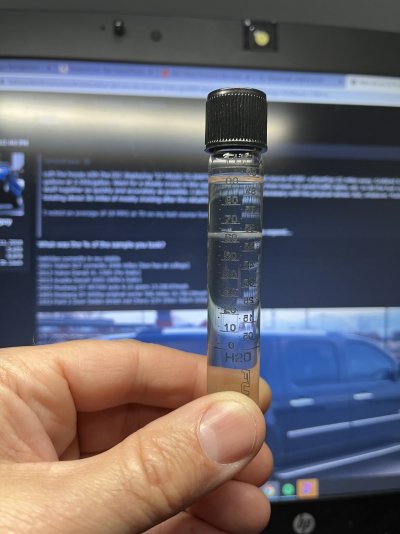It takes almost 24 hours to finish separating in the tube. So, I just checked it when I read your post...
View attachment 401234
The line is fuzzy. But, if it were the meniscus, it'd be just under 65%, like 62% to 63%. The sensor settled at 62% yesterday, so, I think it's doing great! It's only my second time testing it, but it was pretty much the same last time- within 2% of the water test. Due to the variables involved and the fact that it is consistent with reading that 2% differential, I'm gonna say it's pretty damned accurate. It's WAY better than the virtual sensor consistently calculating as high as ~30%
low. Yeah, some new and different oxygen sensors might would've helped that. But, I did the physical sensor conversion for much less and I'm convinced my 23K-mile "wrong" O2 sensors are perfectly fine for their regular fueling duties.
Speaking of fueling, I'm gonna call this load E64. I was averaging 18 MPG on my test course yesterday. If E85 is 27% "weaker" than E0, then this E64 should only be 20% weaker than E0. Meaning, I should have a 20% drop in MPG from my norm with all other factors the same. My norm on E10 (I never bother with E0) is 22MPG at 70MPH. Drop that MPG by 20% and I'm at 17.6MPG. Considering that's actually E10 and not E0 I'm comparing to the E64, it's scaled down a tiny hair. So, it all checks out beautifully.
֎֎BONUS ROUND֍֍
If you wanna compare costs: 93 (E10, but actual % unknown) from that same station was $3.65 at the time of fueling. To break even with the reduction in MPG on E64, the price of the E64 would have to be 20% lower. At $2.55, it's 30% lower. More power at a lower cost = win.



